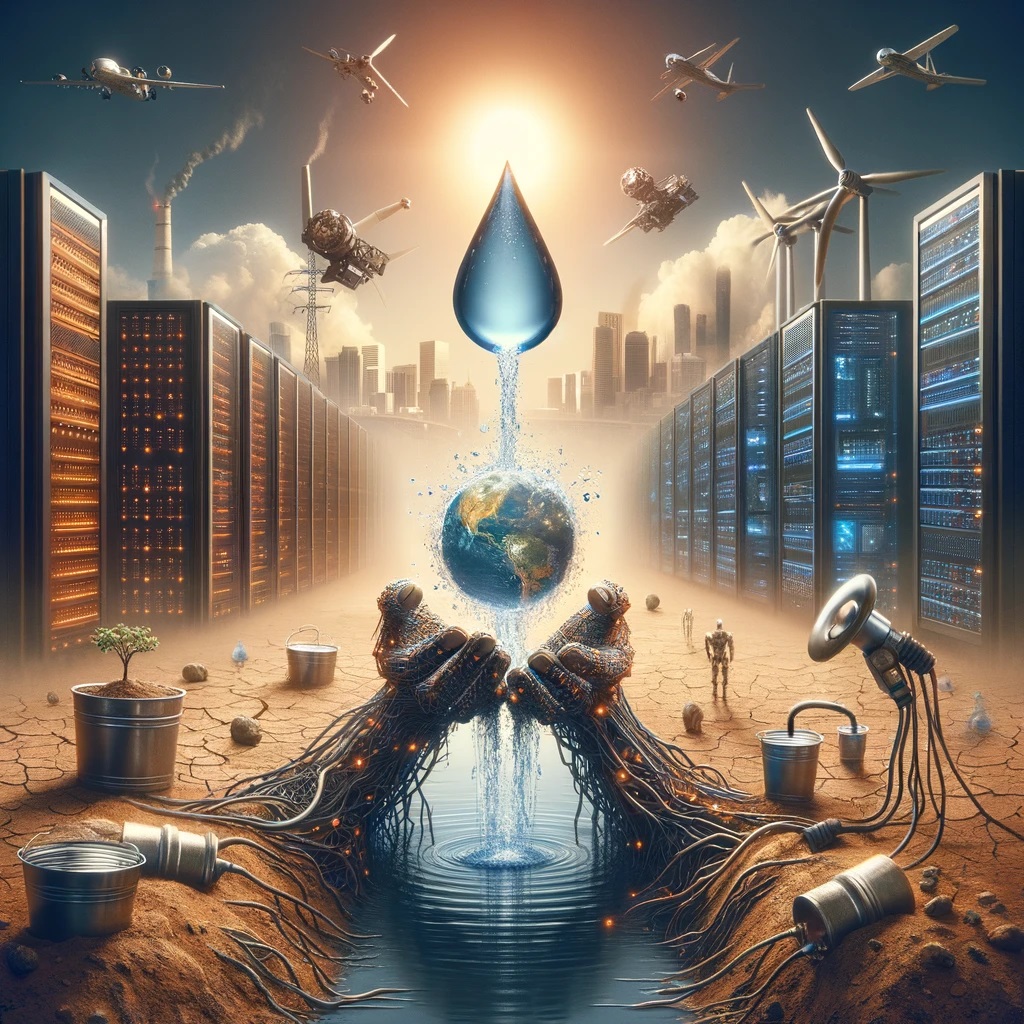The Water Dilemma: Navigating AI's Thirst In A World Running Dry

In the shadow of the digital age's brightest innovations, a less visible but increasingly critical issue is emerging: the significant water consumption by the technology sector, especially as it fuels the artificial intelligence (AI) boom. Giants like Microsoft, Google, and Meta have ramped up their water use to cool down the massive data centers powering our online lives, raising alarms over the potential environmental impacts. This surge in consumption comes at a time when freshwater resources are already under severe strain globally.
The AI Boom and Its Thirst for Water
Microsoft, Google, and Meta, pioneers in the realm of digital innovation, have seen their water usage soar as they expand their data center operations to support an insatiable demand for AI-driven services. In 2022 alone, Microsoft's water consumption spiked by 34%, Google's by 22%, and Meta's by 3%, underscoring the scale of the industry's reliance on this precious resource. This trend aligns with predictions from researchers at the University of California, Riverside, suggesting that AI demand could lead to water withdrawals of up to 6.6 billion cubic meters by 2027—nearly half the annual consumption of the United Kingdom.
Environmental Impacts and Local Concerns
The real-world implications of these figures have already begun to surface, as illustrated by a lawsuit from residents in West Des Moines, Iowa. They claim a data center cluster, crucial for AI operations, consumed 6% of the district's water, spotlighting the tangible effects on local communities. Beyond local disputes, the broader environmental concerns loom large, with the potential exacerbation of droughts and depletion of already scarce freshwater resources.
The Need for Transparency and Sustainable Practices
Yet, as the industry's thirst grows, so does the call for transparency and sustainable practices. The precise water and energy footprints of AI technologies remain largely undisclosed, leaving a gap in our understanding of their environmental impact. Experts like Kate Crawford emphasize the critical need for detailed reporting to grasp the true scale of AI models' resource use. In response, companies have pledged to adopt more sustainable practices, including efforts to replenish more water than they consume through initiatives aimed at improving irrigation infrastructure and restoring wetlands.
Innovative Solutions and Future Directions
Facing these challenges, the tech industry stands at a crossroads between innovation and sustainability. Advanced cooling technologies and the integration of renewable energy sources present promising pathways to reduce water consumption in data centers. Furthermore, the role of policy and regulation in fostering environmentally responsible practices cannot be overstated, offering a blueprint for balancing technological progress with ecological preservation.
Conclusion: A Call to Action
As we delve deeper into the era of artificial intelligence, the imperative to address its environmental footprint becomes increasingly urgent. It is a call to action for tech companies, policymakers, and the global community to unite in pursuit of transparency, innovation, and sustainability. By embracing a holistic approach that champions both technological advancement and environmental stewardship, we can ensure a future where the digital and natural worlds coexist in harmony. The journey ahead is complex, but the destination—a world where innovation thrives without compromising our planet's health—is well worth the effort.
Author: Ricardo Goulart
From Chip War To Cloud War: The Next Frontier In Global Tech Competition
The global chip war, characterized by intense competition among nations and corporations for supremacy in semiconductor ... Read more
The High Stakes Of Tech Regulation: Security Risks And Market Dynamics
The influence of tech giants in the global economy continues to grow, raising crucial questions about how to balance sec... Read more
The Tyranny Of Instagram Interiors: Why It's Time To Break Free From Algorithm-Driven Aesthetics
Instagram has become a dominant force in shaping interior design trends, offering a seemingly endless stream of inspirat... Read more
The Data Crunch In AI: Strategies For Sustainability
Exploring solutions to the imminent exhaustion of internet data for AI training.As the artificial intelligence (AI) indu... Read more
Google Abandons Four-Year Effort To Remove Cookies From Chrome Browser
After four years of dedicated effort, Google has decided to abandon its plan to remove third-party cookies from its Chro... Read more
LinkedIn Embraces AI And Gamification To Drive User Engagement And Revenue
In an effort to tackle slowing revenue growth and enhance user engagement, LinkedIn is turning to artificial intelligenc... Read more

